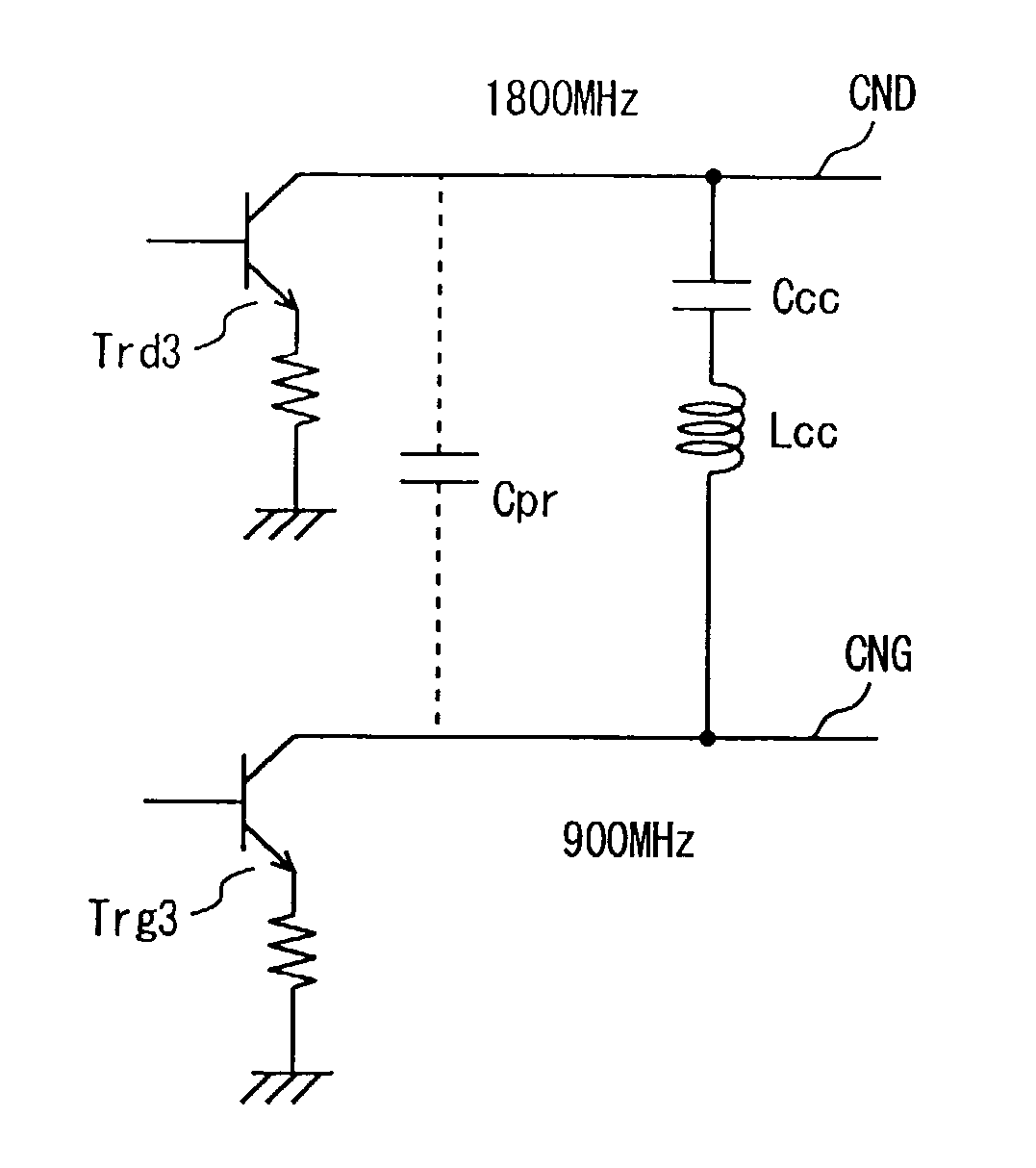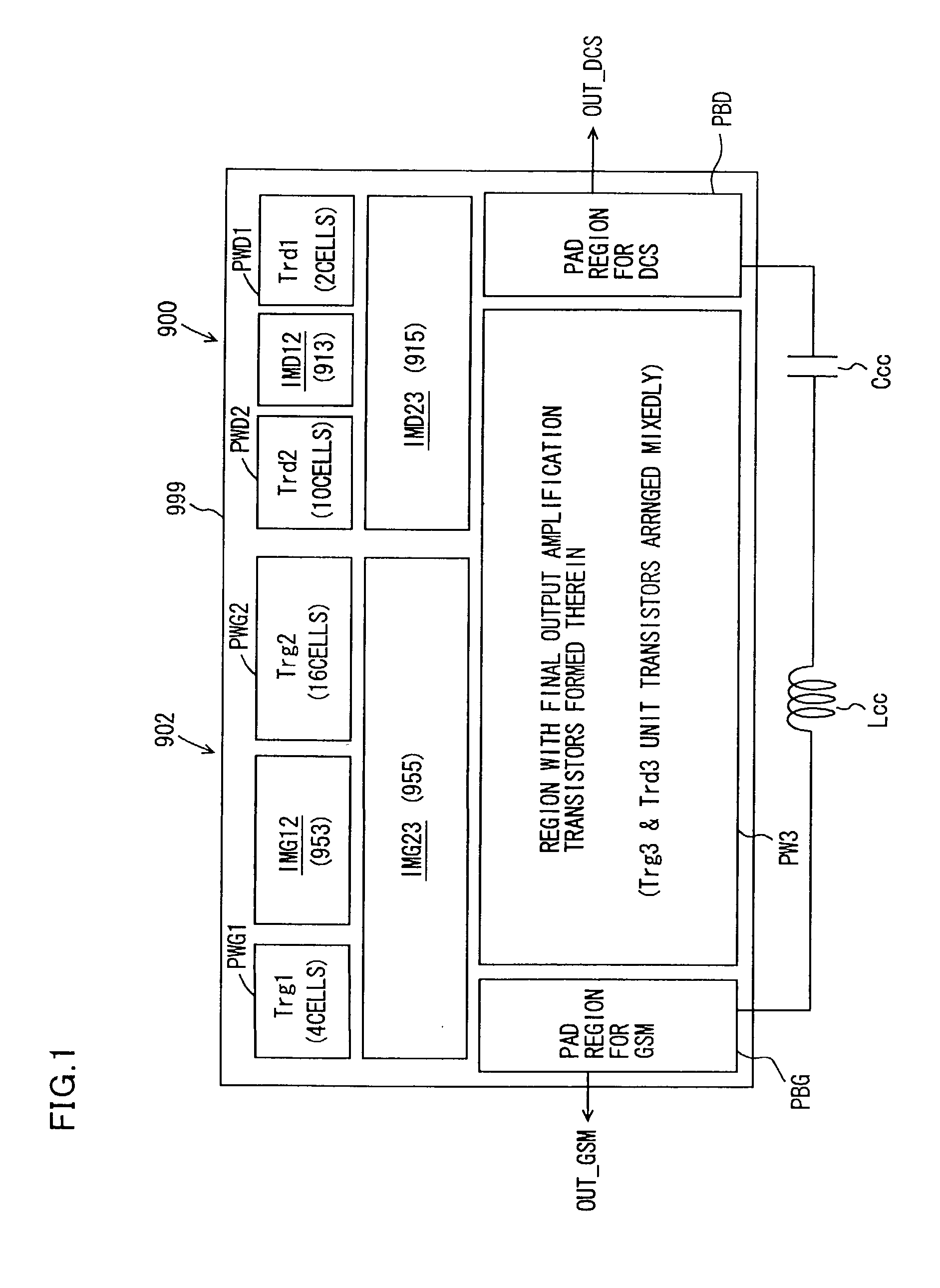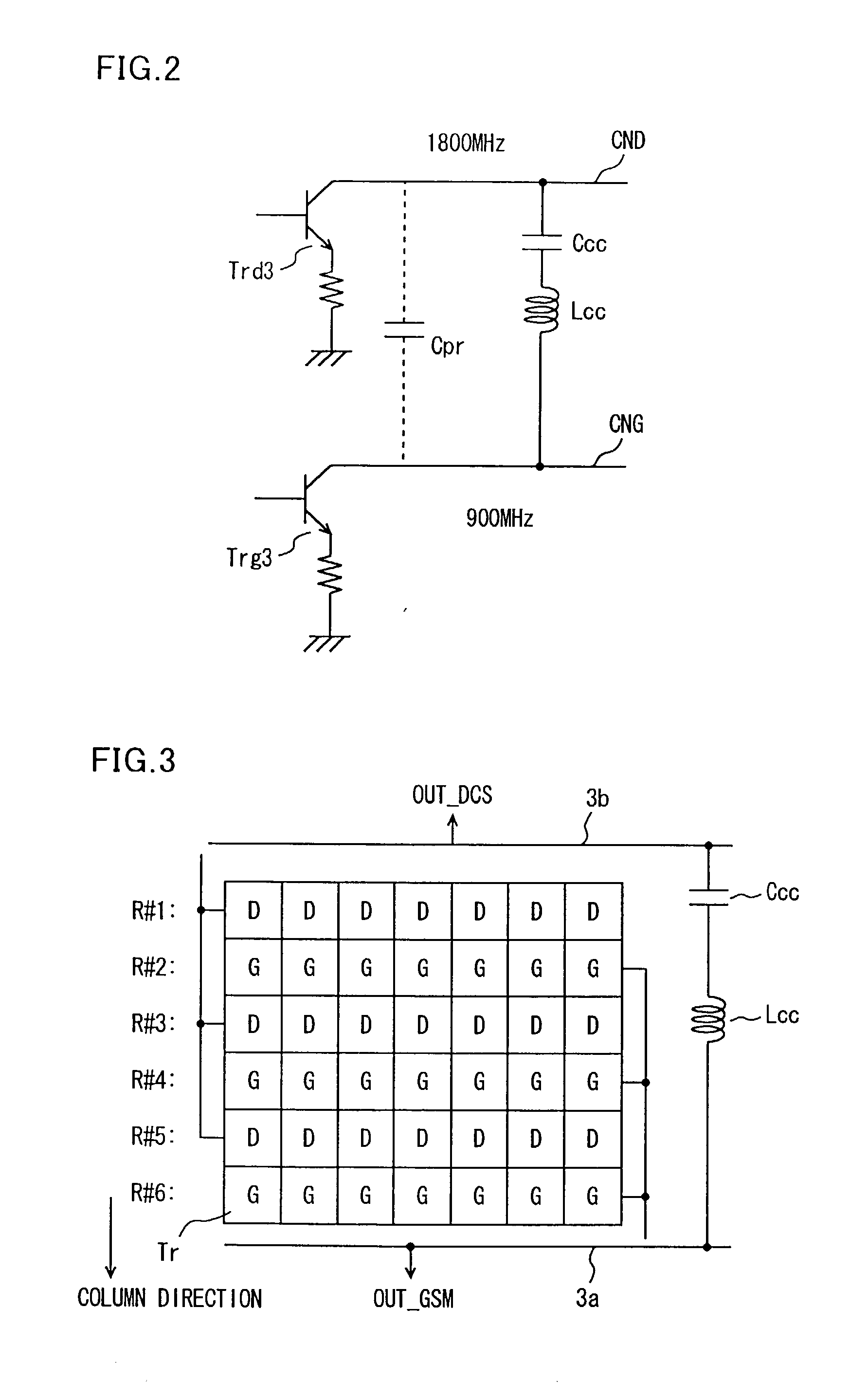Multi-band power amplifier
a multi-band, power amplifier technology, applied in the field of amplifiers, can solve the problems of increasing the loss of collectors to generate heat, destroying the final-stage power amplification transistor, and reducing the current concentration due to generated hea
- Summary
- Abstract
- Description
- Claims
- Application Information
AI Technical Summary
Benefits of technology
Problems solved by technology
Method used
Image
Examples
first embodiment
[0099] First Embodiment
[0100] FIG. 1 schematically shows a layout of a chip of a DCS / GSM dual-band power amplification circuit in accordance with a first embodiment of the present invention. The dual-band power amplification circuit of FIG. 1 is different in layout from that shown in FIG. 18 in the following points. Unit transistors (Tr) for constructing final-stage output power amplification transistors Trd3 and Trg3 of the respective DCS and GSM power amplifiers are arranged in a mixed manner in a region PW3 for forming the final output amplification transistors.
[0101] A DCS pad region PBD and a GSM pad region PBG are arranged opposite each other with respect to the region PW3. The DCS final-stage power amplification transistor has its collector connected to an output line connected to pads in DCS pad region PBD to output an output signal OUT_DCS.
[0102] The GSM final-stage power amplification transistor has its collector connected to an output line connected to pads included in DS...
second embodiment
[0115] Second Embodiment
[0116] FIG. 3 schematically shows an arrangement of unit transistor Tr of the final-stage power amplification transistor in accordance with a second embodiment of the present invention. In FIG. 3, unit transistors Trs are arranged in a plurality of rows and a plurality of columns. FIG. 3 exemplarily shows a layout of arranging unit transistors Trs in six rows and seven columns.
[0117] In this transistor array, unit transistors Trs arranged in odd-numbered rows R#1, R#3 and R#5 are used as the final-stage power amplification transistor of the DCS power amplifier, and unit transistors Trs arranged in even-numbered rows R#2, R#4 and R#6 are used as components of the final-stage power amplification transistor of the GSM power amplifier. In FIG. 3, a letter "D" denotes unit transistor Tr used as a component of the DCS power amplification transistor and a letter "G" denotes unit transistor Tr used as a component of the final-stage power amplification transistor of t...
third embodiment
[0139] Third Embodiment
[0140] FIG. 5 schematically shows an arrangement of unit transistors in accordance with a third embodiment of the present invention. In FIG. 5, unit transistors are arranged in rows and columns. In each of unit transistor rows R#1-R#6, a unit transistor D configuring a DCS power amplification transistor and a unit transistor G configuring a GSM power amplification transistor are arranged alternately. Furthermore, in each of unit transistor columns C#1-C#7, DCS and GSM unit transistors D and G are arranged alternately. That is, in the arrangement of FIG. 5 of unit transistor cells, DCS and GSM unit transistors D and G are arranged alternately, in both of the row direction and the column direction.
[0141] For interconnecting the collectors of GSM unit transistors Gs, sub collector interconnection lines 4a1-4a7 are arranged, in unit transistor columns C#1-C#7, extending in the column direction. For interconnecting the collectors of DCS unit transistors Ds, sub col...
PUM
 Login to View More
Login to View More Abstract
Description
Claims
Application Information
 Login to View More
Login to View More - R&D
- Intellectual Property
- Life Sciences
- Materials
- Tech Scout
- Unparalleled Data Quality
- Higher Quality Content
- 60% Fewer Hallucinations
Browse by: Latest US Patents, China's latest patents, Technical Efficacy Thesaurus, Application Domain, Technology Topic, Popular Technical Reports.
© 2025 PatSnap. All rights reserved.Legal|Privacy policy|Modern Slavery Act Transparency Statement|Sitemap|About US| Contact US: help@patsnap.com



